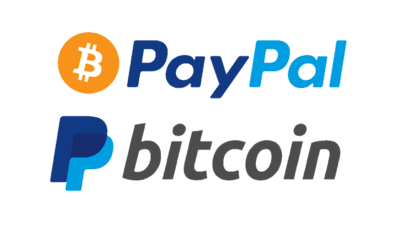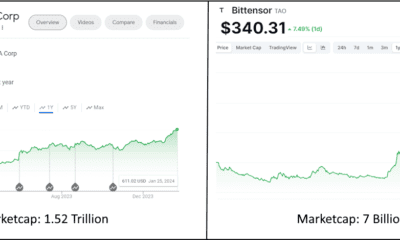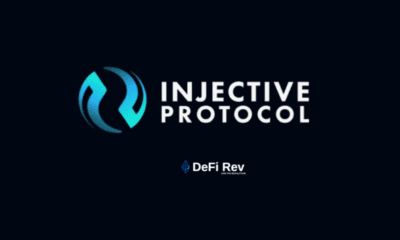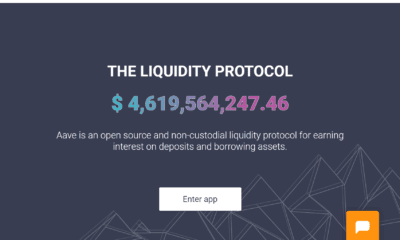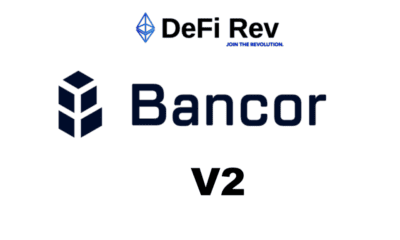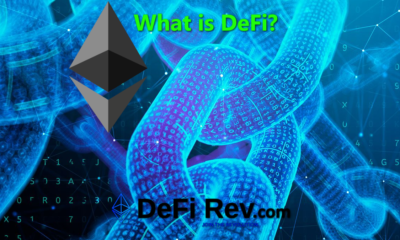trading
What is Solana? How SOL is aiming to solve scaling issues.


How Solana has solved scalability issues of Blockchain
Decentralized applications need the global exposure it rightly deserves. The current trends show how successful decentralized token platforms have been and Solana is a high-speed single layer blockchain that has been designed to create solutions that will allow decentralized blockchains to become a globalized data system.
Scalability is one of the biggest challenges that Blockchain faces. Solana has solutions for the common problems of blockchain that currently supports a peak capacity of 65k transactions per second and 400ms block times with the help of a timestamp system called Proof-of-History (PoH).
What is Solana?
Solana was founded in 2017 by Antony Yakavenko who was an executive at Qualcomm. He has had a plethora of experience working with different decentralized systems with compression algorithms for DropBox. He then joined hands with Greg Fitzgerald the CTO and Eric Willians to create a trustless protocol that converts into a code the time passage within the data structure allowing for superior scalability.
Solana is a delegated Proof-of-Stake protocol that focuses on providing scalability without giving up on security and decentralization attributes.

SOL Token
Solana has a token called SOL passable to the nodes on the Solana Blockchain to validate its output on an on-chain program.
Circulating Supply16,350,633 SOL (3.35%)
Current Total Supply*488,634,933 SOL
Initial Total Supply500,000,000 SOL
Key features
Proof of History
The biggest challenge that distributed networks face is to find a common ground on time and sequence in which events occur. As a part of the system, all validators are required to solve SHA256-based Verifiable Delay functions (VDF). By default, VDF requires a fixed number of steps to analyze but produces an output that can be publicly verified.
Its unique Decentralized timeline system called Proof of History or PoH is built in order to solve the issue of time in distributed networks that does not have a single source of time. PoH uses Verifiable Delay functions that allow every single node to generate timestamps with SHA256 computations. The mechanisms call for holistic growth and high-frequency blockchain applications in order to free the global financial system.
TowerBFT integration
PoH allows the user to compute the node scenarios with only a fraction of the messaging overhead of a majority of the PoS systems. They work with Solana’s version of PBFT or Practical Byzantine Fault Tolerance as the network’s time-keeper letting the protocol encode vote lockouts in the ledger if any so that validators do not vote on two different forks at the same time. If any such thing is detected the validator will be penalized by the slashing of his stakes.
Turbine
The time required to promote all blockchain data to all the nodes can be the biggest roadblock to achieve scalability. The lack of bandwidth could be the reason behind this. Solana proposes that a solution to this would be disintegration of data into packets with smaller amounts of bandwidth. Turbines are that feature that leverages the network to transport data in bits for more impact.
Gulfstream
For every single block production process, the network leaders will also be decided based on their individual stakes. The validators as well as the clients can forward transactions to the leader much ahead of time allowing validators to execute the transactions ahead of time, rapidly switch leaders, and also reduce confirmation times.

Cloud break
Poor memory size in a distributed system works as the biggest roadblock to a good performance. Cloudbreak as a feature was designed to optimize the ongoing reads and writes across RAID 0 configuration of SSDs.Additional disks add to the storage capacity of on-chain programs with the increase in concurrent reads and programs written when execution takes place.
Conclusion
Solana is the future because its solutions target scalability for blockchain systems. It has also addressed some of the biggest issues that decentralized platforms face. It has removed sharding from its infrastructure which has contributed towards faster validation and more security also.
Currently, Solana operates on a non-linear architecture which undoubtedly is better than linear blockchains and could command the future. Proof of History is surely an interesting way to remove the time-issue from the blockchain. Solana’s solutions may be destined for a global time standard for blockchain operations.
trading
Pump.fun coin founders raise $1.32 billion

Pump.fun coin founders rake in billions
Pump.fun’s latest growth streak began with the conclusion of its public sale on July 12th, which brought in $1.32 billion across private and public rounds. The public portion alone, priced at $0.004 per token, raised $600 million in just 12 minutes. This was followed by the launch of $PUMP trading, with tokens distributed and markets opening within days, making it one of the largest crypto fundraises in recent years.
Following this, the team introduced a creator-fee redirection feature for projects hosted on PumpSwap or still within the bonding curve. This update allowed fees to be reassigned to active community leads in cases of leadership changes, provided there was a clear and verified request.
Pump.fun has also rolled out a public revenue dashboard, giving the community full visibility into daily platform earnings. Over a six-day period, the team bought back 8,740 SOL worth of $PUMP, exceeding the revenue generated during that time. In their words, it was about “putting our money where our mouth is” when it comes to reinvesting in the ecosystem.
Most recently, Pump.fun launched the Glass Full Foundation (GFF), a funding program for standout communities within its ecosystem, which are often called “diehard cults” internally. As part of this launch, the team has already awarded initial grants, with more recipients expected as the program scales.
From record-breaking fundraising to ecosystem reinvestment and targeted community funding, Pump.fun has spent the past several weeks strengthening its position as a leading Solana-based memecoin launchpad.
Go back to DeFiRev.com HOME
Go to Market Watch
trading
Bittensor booms as Chip Mania hits Stock Market: The AI Race and the Potential of TAO
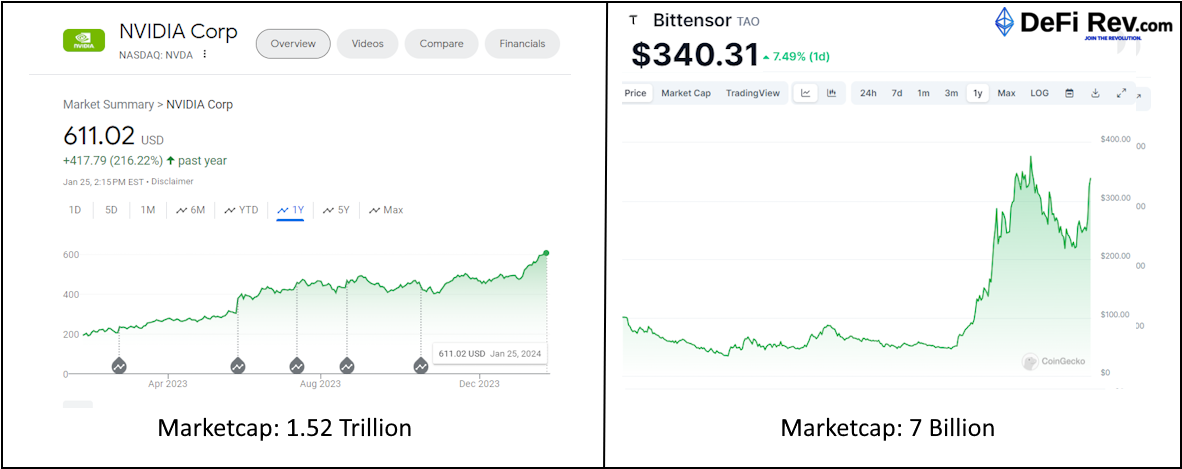
The stock market has been abuzz with the latest trend in technology investments: semiconductor chips. This “chip mania” is fueled by the global race for artificial intelligence (AI) supremacy, as chips are the fundamental building blocks of AI and machine learning technologies. As companies and countries vie for the lead in AI, the demand for advanced semiconductor chips has skyrocketed, leading to significant interest from investors. In this context, Bittensor, with its unique decentralized approach to AI, emerges as a potentially strategic investment.
Nvidia and Bittensor might seem quite different at first glance—one is a big name in computer graphics, and the other is part of the exciting world of decentralized networks. But they actually have a lot in common, especially when it comes to artificial intelligence .
The AI Race and Chip Demand
AI has become a critical component of modern technology, from consumer applications like voice assistants to complex systems such as autonomous vehicles and smart cities. The performance of AI systems is heavily dependent on the processing power provided by semiconductor chips. As AI models become more sophisticated, they require more computational resources, driving the demand for high-performance chips.
This demand has led to a surge in investments in chip manufacturers and designers. Companies like NVIDIA, AMD, and Intel have seen their stock prices soar as they continue to push the boundaries of chip performance. The market has also witnessed the rise of specialized AI chip startups, all competing to create the most efficient and powerful processors.

Supply Chain Challenges and Investment Opportunities
The increased demand for chips has not been without its challenges. The global semiconductor supply chain has been under strain, with issues such as the COVID-19 pandemic, trade tensions, and production bottlenecks leading to shortages. These shortages have highlighted the critical nature of chips in the global economy and have spurred further investment as companies seek to secure their supply chains.
Investors are keenly aware of the strategic importance of semiconductors and are looking for opportunities to capitalize on the chip mania. This has led to a bullish outlook on chip stocks, with many analysts predicting continued growth as the AI race heats up. This also has led to a boon from smart money to look into Bittensor.
Bittensor: A Decentralized Approach to AI
Nvidia and Bittensor might seem quite different at first glance—one is a big name in computer graphics, and the other is part of the exciting world of decentralized networks. But they actually have a lot in common, especially when it comes to artificial intelligence (AI). Let’s break down how they’re both helping to push technology forward:
Nvidia makes the powerful graphics cards that a lot of AI programs need to run. Bittensor, on the other hand, gives people a place to run AI programs on a network that’s spread out across many computers. Nvidia is always coming up with new ideas for its graphics technology, which is super important for video games, AI, and big calculations. Bittensor is also all about new ideas, but it’s focused on making AI services that don’t rely on just one place or computer.
Nvidia has a huge group of developers who use its tech to create all sorts of things, and it helps them out with special software and tools. Bittensor also depends on a community, but it’s made up of developers and people who contribute computer power to the network, and they get rewarded with digital tokens.
Both Nvidia and Bittensor have lots of room to grow, but in different ways. Nvidia is growing because more and more industries need its graphics cards. Bittensor’s growth is tied to how many people start using decentralized AI services and how the whole area of digital currencies and blockchain technology gets bigger.
Now, let’s imagine it’s two years from now, and Bittensor has really taken off. Here’s what that could look like:
Everyone’s Using Decentralized AI
Bittensor’s network is the go-to place for AI services that aren’t tied to one spot. There’s a big group of smart people and companies using and adding to the network.
Even small companies or solo developers can make cool AI stuff because Bittensor makes it easy to get to machine learning tools and computer power.

Amidst the frenzy for traditional chip stocks, Bittensor presents a novel investment opportunity. Bittensor is not a chip manufacturer; rather, it is a decentralized network that leverages the collective power of distributed machine-learning models. By pooling together the resources of miners across the globe, Bittensor facilitates the creation and operation of AI models in a decentralized manner.
The Bittensor network offers several advantages to Nvidia that could make it an attractive investment:
The Bittensor network offers several advantages that could make it a competitor to Nvidia.
Decentralization: Unlike centralized AI services, Bittensor is not reliant on a single entity or data center. This reduces the risk of outages and censorship, potentially leading to a more robust and resilient AI network.
Incentivization
Miners on the Bittensor network are rewarded for contributing computational resources and for the performance of their AI models. This creates a marketplace for AI services where competition drives innovation and efficiency.
Scalability
As the demand for AI grows, Bittensor’s decentralized model allows for easy scaling by simply adding more miners to the network. This contrasts with the physical limitations and capital expenditures required to scale traditional data centers.
Accessibility
Bittensor democratizes access to AI by allowing anyone with computational resources to participate as a miner. This could lead to a more diverse and widespread development of AI applications.
The chip mania in the stock market is a reflection of the critical role that semiconductors play in the burgeoning AI industry. While traditional chip stocks are an obvious choice for investors looking to capitalize on this trend, Bittensor offers a unique angle. Its decentralized network aligns with the principles of blockchain and the growing interest in distributed systems.
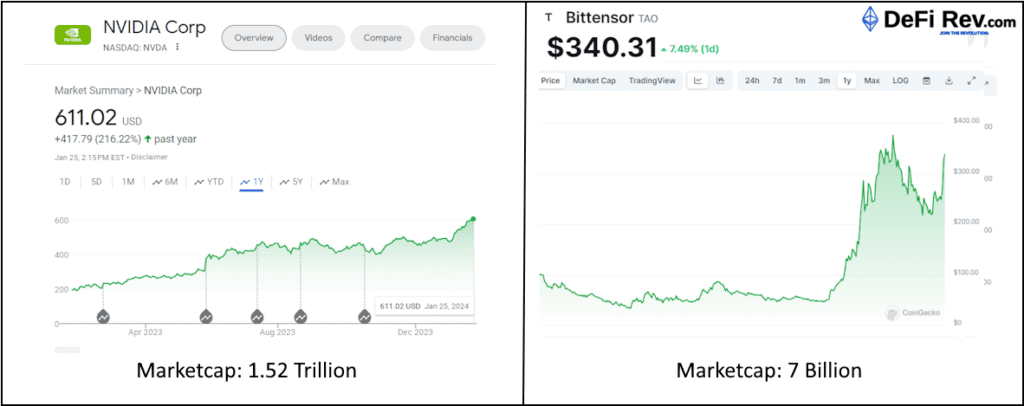
trading
AAVE CRYPTO ASSET SOARING
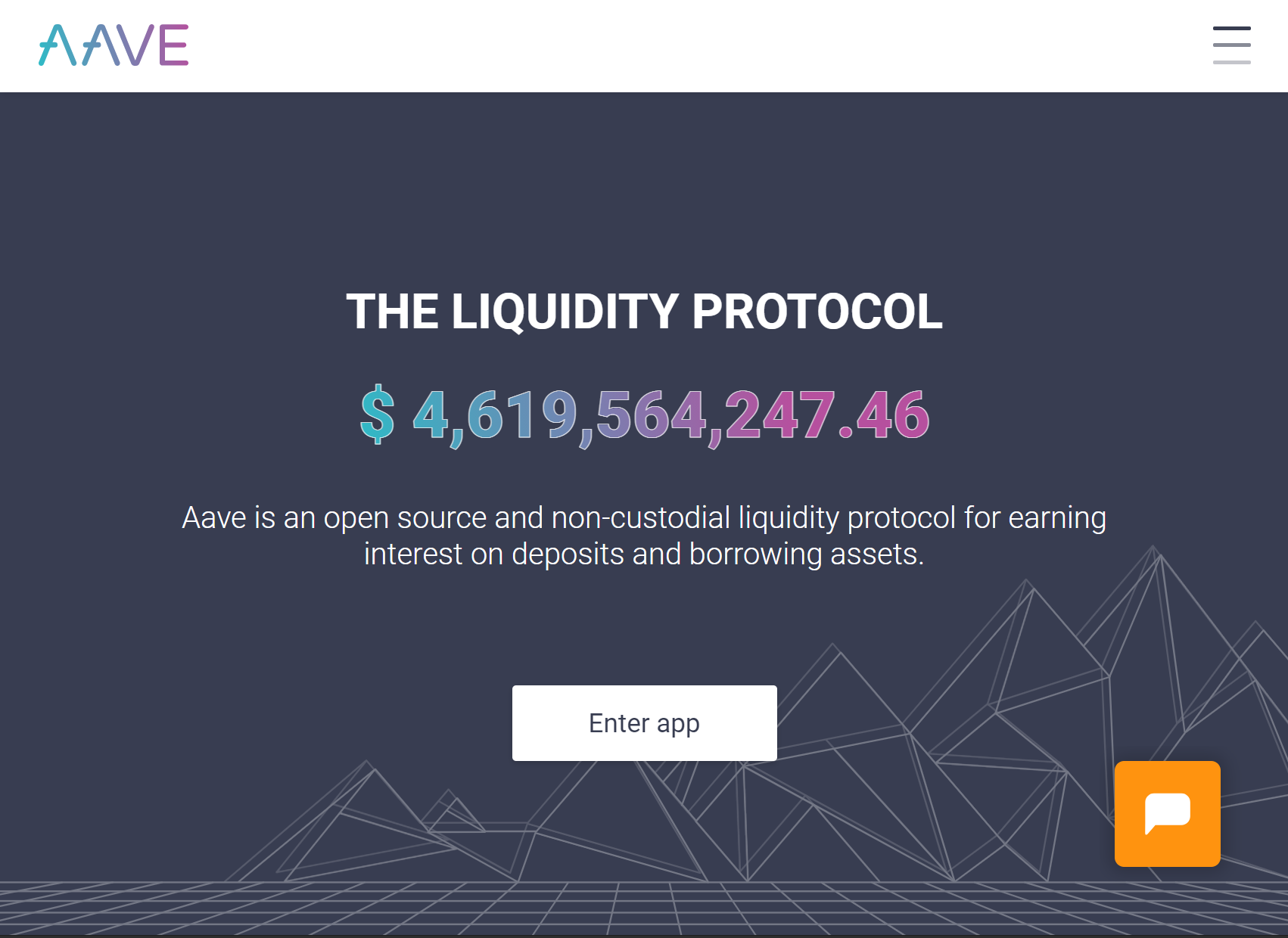

AAVE SOARING TO NEW HEIGHTS AS IT BREAKS $500 USD
AAVE is on fire reaching new all-time highs in rapid succession. As of today, February 4th, 2021, an earth-shattering volume of nearly 3 billion dollars of AAVE was traded in the past 24 hours.
Aave clocks in a new ATH ever since the v2 migration tool launch
Aave (AAVE) has been going strong ever since February began. In just 5 days, AAVE has increased by 76% and today the token hit a new all-time high of $520. The protocol to date has successfully captured users and has done well against its competition. The latest rally for Aave started on Jan 28 when the protocol announced the v2 migration tool. The tool allowed users to easily migrate all account information including the borrowed positions and staked tokens.
The new tool also facilitates easy migration of user information to the updated protocol. Recently on the 1’st of February, the team from Aave protocol posted an update about the same:
“Today is the last day to vote on the AIP to add $BAL on Aave V2.”
A day following the announcement the proposal was passed by the community. The Balancer (BAL) was added on Aave 2 and it was around that time that AAVE rallied from $284 to $300.
The DeFi platform of AAVE is also rejoicing since the platform is undergoing immense upgrades. As per DeFi pulse, the total value locked in the DeFi protocol is now at $4.96 billion ranked second after Maker which has $5.16 billion in total value locked.
AAVE, which is the 15th largest coin in terms of market cap, also recorded a staggering 24-hour trading period. Its trading volume in the last 24-hours touched $2.4 billion! Treyce Dahlem who is a research analyst believes that the recent surge in AAVE price has been fuelled by the big players and institutions who are becoming increasingly interested in DeFi.
He added, “Billionaire Mark Cuban recently spoke about the “unlimited upside” of DeFi and according to a snapshot of his on-chain portfolio, he is an AAVE whale holding more than $150,000 worth of the token. Grayscale recently filed more than a dozen altcoin trusts with Delaware’s corporate registry, one of those altcoins being AAVE. Additionally, Bitwise added AAVE to their Bitwise 10 Large Cap Crypto Index. These announcements have caused investor sentiment to reach a new YTD high of 83.5 (very high).”

AAVE is quickly becoming a household name in DeFi for its revolutionary approach to decentralized lending, and our analysts believe that with the stellar leadership of Stani Kulechov, the Founder and CEO of AAVE, we predict AAVE will move into the top 10 digital assets quite quickly.
It seems apparent that AAVE is the de facto industry leader in its sector, and we surmise that it will be the perfect way for the everyday individual to get their feet wet with DeFi.
Recently, the migration tool from V1 to V2 was made available.
-

 news2 years ago
news2 years agoPayPal Crypto Bound! PayPal is betting on bitcoin and DeFi in a BIG way.
-

 trading2 years ago
trading2 years agoBittensor booms as Chip Mania hits Stock Market: The AI Race and the Potential of TAO
-

 trading2 years ago
trading2 years agoInjective Protocol, the new Binance IEO, packs a punch
-

 trading2 years ago
trading2 years agoUniSwap Heating up BIG TIME! Is this the end of IEOs? New DeFi Projects fundraising on Uniswap.
-

 interviews2 years ago
interviews2 years agoBobby Ong CoinGecko CEO: Interview with the Trailblazing Entrepreneur
-

 trading2 years ago
trading2 years agoAAVE CRYPTO ASSET SOARING
-

 trading2 years ago
trading2 years agoBancor V2 : Liquidity Reloaded
-

 news2 years ago
news2 years agoDecentralized Finance explained. What is DeFi?

